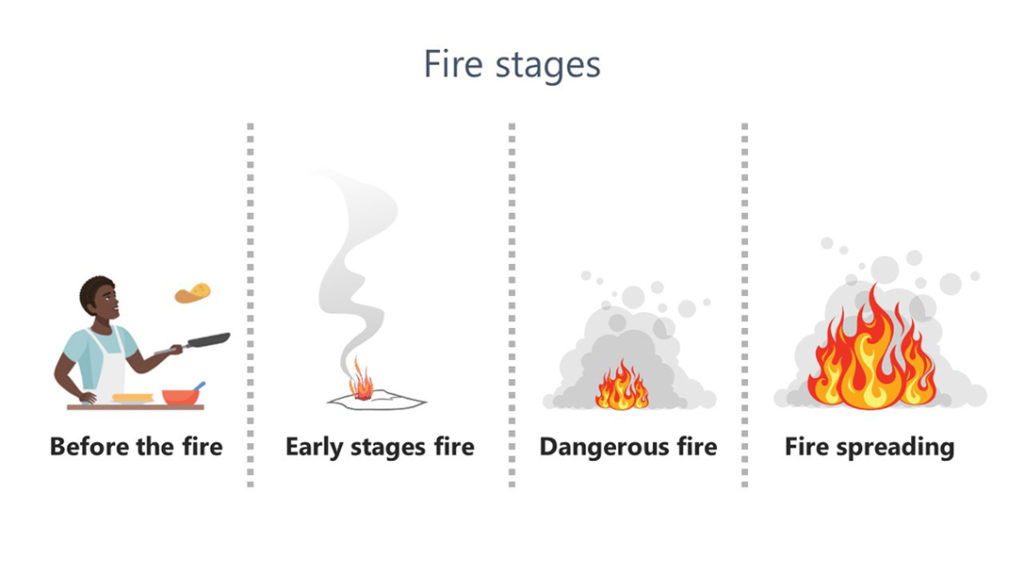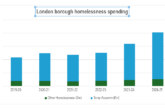
 Yusuf Muhammad, Chief Design Officer at British Engineering company and misting manufacturer Plumis, says it’s time for a fresh approach to fire safety to prevent fire-related deaths.
Yusuf Muhammad, Chief Design Officer at British Engineering company and misting manufacturer Plumis, says it’s time for a fresh approach to fire safety to prevent fire-related deaths.
Despite growing awareness of the importance of fire safety measures in the home, the number of people who died in UK fires rose last year. There were 33,390 accidental fires reported in the UK in 2021/22, with 334 fire-related deaths — a 7% rise on the previous year. This worrying increase highlights the need to take a fresh look at how we protect people in their homes and reduce the risk of fire.
Ageing population
Most fire-related deaths (76%) happen in the home. There were 4.8 fire-related fatalities for every million people in England, with the highest rate among older people — 10.4 per million 65-79-year-olds, increasing to 19.7 for people aged 80-plus.
With an ageing UK population, it is likely this number will rise further. Statistics suggest that, over the next 10 years, the number of people aged 65-plus will grow from 11 million to 13 million — 22% of the population.
There is an urgent need for social housing landlords and providers of care and support services to take steps to identify older residents who may need extra levels of protection in case of fire.
 Time is of the essence
Time is of the essence
All fire safety is focused on time. For example, a performance-based fire strategy may compare the time required for occupants to reach a place of relative safety (Required Safe Escape Time or RSET) with the time available to reach a place of relative safety before survivable conditions are no longer intact (Available Safe Escape Time or ASET).
Similarly, materials used are measured in units of time. A surface or building component might shield or inhibit fire spread for at least 30, 60, 90 or 120 minutes, depending on the chosen rating level.
Activated fire suppression systems have response times characterised by the Response Time Index (RTI) and Conductivity (C) factor. The RTI provides a thermal time constant for the heat responsive element, while the C factor represents the heat loss to surrounding physical components. The higher these values, the longer the head or nozzle will take to respond to a fire.
Time is also at the heart of guidance around fire drills, which should be carried out annually, and fire alarm testing, which should be done every week. When it comes to more vulnerable residents who would struggle to escape in the event of a fire, the key is to invest in measures that buy more time to keep them safe until the fire service arrives to rescue them.
Tailored approach
With time being such a critical factor when a fire occurs, along with the recognition of our ageing population, Person-Centred Fire Risk Assessments (PCFRAs) are crucial to enable social housing and support providers to draw up effective fire safety strategies.
While certain buildings, such as high-rise apartment blocks, present unique fire safety challenges, statistics show that particular types of occupants are at greater risk.
PCFRAs are a powerful tool in keeping people safe, enabling landlords to understand the specific needs of vulnerable individuals at higher risk and to then implement appropriate measures to mitigate those risks.
Taking into account the heightened risks for older, more vulnerable residents, a government consultation carried out into the use of fire sprinklers in care homes, concluded: “We consider sprinklers provide particular benefit for low frequency, high consequence incidents where there is unexpected early fire spread and delays in evacuation. The addition of sprinklers would provide another layer of protection to control fire and help avoid multi-fatality incidents arising from early fire spread.”

Fit for purpose
When people consider their options around automatic systems to tackle fires, traditional water sprinklers generally spring to mind, but it should be remembered that they are not a blanket solution for all situations. For example, such conventional sprinkler systems may not operate quickly enough to prevent death or serious injury of people in the room where the fire started. Home Office data shows that between 2010 and 2020, nine people died in homes protected by fire sprinklers. In all but one of these cases, the victim was over the age of 65.
A study of fatal residential fires, where sprinklers were present, found that the circumstances of the fire fell outside the life-saving operating parameters of the system’s design. Typically, the victim was also unable to move away from the fire or remove burning clothing due to mobility issues, and often they were medically more likely to succumb to burns or smoke inhalation due to age or infirmity.
Exploring alternative solutions
Our watermist sprinkler system has been designed to offer improved protection for vulnerable occupants. By operating at the earliest opportunity it helps to maintain survivable conditions, providing valuable extra time for escape or rescue.
When we were developing our Automist products, we spoke to world-leading toxicologist Professor David Purser to understand the factors which would influence means of escape.
Electronic activation can enable fires to be tackled earlier, limiting the build-up of toxic smoke, which is the biggest danger in domestic fires. The speed of activation is of course very important for vulnerable occupants, as they may be unable to move away from the heat source — which has to reach a significant temperature to activate a traditional domestic sprinkler system.
So, by taking proactive steps to prevent fires from breaking out while also having the right technology in place to detect fires quickly and efficiently, we can significantly improve how a potential fire is tackled and maximise occupants’ safety.
Although this may sound like a time-consuming and costly option, the advances and flexibility of electronic watermist suppression systems ensures that is not the case. Today, many fire suppression technologies can be retrofitted flat-by-flat or to a whole residential block, with little or no disruption to residents.
Now, more than ever, housing providers are under pressure to make sure their homes are safe for their residents. So, we urge landlords to act now by implementing additional layers of fire protection, rather than simply aiming to meet minimum requirements or awaiting the announcement of new regulatory controls.









